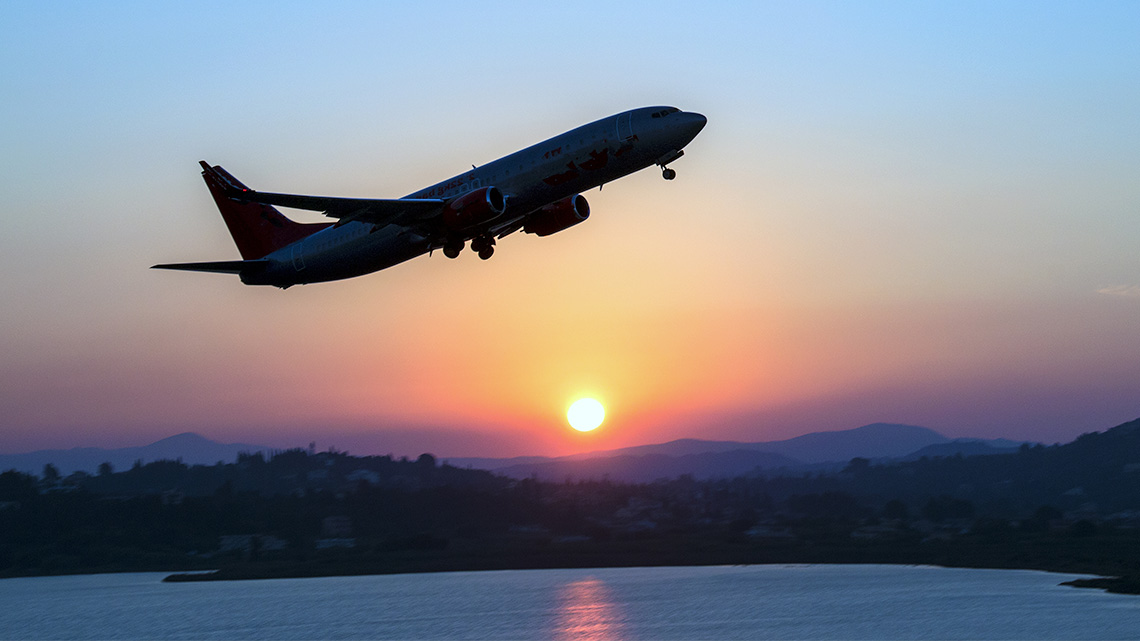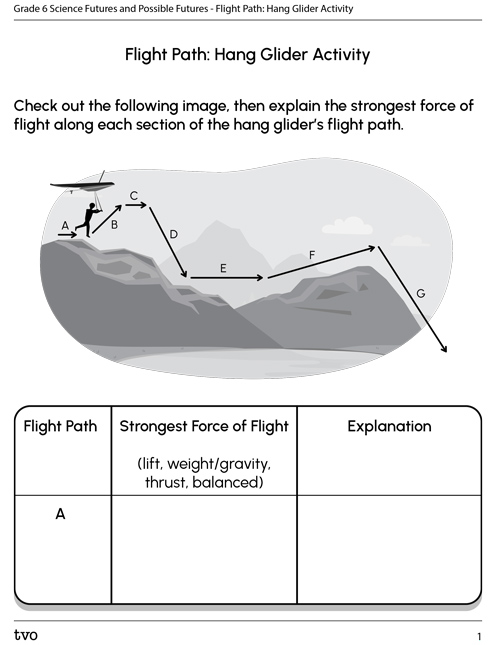Minds On
Flight

Have you ever wondered how it’s even possible for heavy machines, such as planes or spacecrafts, to fly or even get their immense weight up off the ground?
How is it possible for a bee to take off, given that their bodies are so much bigger and heavier than their small, delicate wings?
How does any flying object overcome its own weight to be able to fly?
Manipulating the forces of flight is how! Let’s recall the four forces of flight.
Check out this video clip from the Science Centre to learn more about the forces of flight.
Identify which force of flight was not mentioned in the previous video.
Press ‘Let’s Check!’ to access the force of flight that was not discussed in the video.
Weight is the force of flight not mentioned in the explored video.
Action
Future impacts
This learning activity connects new and existing approaches for young scientists to create positive changes in their communities.

Stay in the air

The forces of flight are incredible wonders!
Weight, lift, drag, and thrust in different proportions are what allow the different aspects of flight to happen.
Let’s explore the force of lift in more detail, and try to investigate how it helps large and heavy objects to overcome their weight and stay in flight!
Bernoulli principle
Check out the following video entitled “Bernoulli and Company” to learn more about the Bernoulli principle.
Bernoulli’s principle helps to explain how airplanes achieve lift with the help of both fast and slow moving air.

Bernoulli’s principle
Illustrated diagram of a plane flying through the air. The illustration points to the plane’s wing and provides a zoomed in diagram of what a cross section of the wing would look like. Two lines of arrows – representing the movement of air – flow toward the cross section of the wing. When the arrows reach the wing, some flow up and over the wing and some flow down and below the wing. The diagram highlights that low pressure is created above the wing due to faster moving air, and high pressure is created below the wing due to slower moving air.
Airfoil
The shape of an airplane’s wing plays an important role in maximizing Bernoulli’s principle and allowing the airplane to fly. The sideways teardrop shape is what scientists call an airfoil.
Examine the following image of an airfoil:

Check out the following video clip entitled “Air Surfing” to learn more about airfoils and how they provide lift.
Brainstorm
Brainstorm

Where do you think scientists might have got the inspiration for an airfoil’s design?
Bernoulli’s principle is at work in lots of places in the natural world!
Let’s think of any examples in nature that have an airfoil shape to help them fly through the air. Then, explain how the airfoil shape helps your nature example fly.
Record your ideas in a notebook or another method of your choice.
If possible, share your ideas with a partner.
Flyers or gliders?

Did you know that a paper airplane can’t fly?
It actually glides!
Access the following video clip to learn more about flyers and gliders.
After exploring the video, reflect on the following question:
What is the difference between flyers and gliders?
Record your ideas in a notebook or another method of your choice.
Press ‘Let’s Check!’ to access a possible answer.
In order for something to fly instead of glide, it must have a constant thrust.
Gliders, like paper airplanes, can’t maintain thrust from their throw or launch and eventually must return to the ground due to their weight (the force of gravity pulling down on an object) and drag.
Flyers, like birds, flying insects and bats can flap their wings and airplanes rely on their engines to generate continuous thrust.
Investigate
Investigate
Balance
Forces of flight and their balance, or unbalance, are what allow things that fly and glide to be able to control their flight and their eventual landing.
Let’s explore the following image to investigate how the forces of flight apply to a soaring kite.

Kite
A kite flying in the sky. Lift is the force pushing the kite upwards. The force of drag is the same as the direction of the wind. The force of weight is pulling the kite downwards. The force of tension or thrust is created by the string attached to the kite, which is held by a person.
Reflect and respond to the following questions:
- How do you think the kite is able to soar steadily in the air?
- What do you think would happen if one of the forces acting on the kite became unbalanced?
Explain your thinking, and if possible, try and include a detailed sketch or diagram of the unbalanced forces of flight to support your response.
Record your ideas in a notebook or another method of your choice.
Press ‘Hint’ to access an additional detail.
When the forces of flight are balanced, flying objects are able to fly, or glide, at a constant speed and altitude (height).
Flight path: Kite
In the following activity, place the kite stickers on the grid map to mark its flight path up and over the tree.
For the following questions, select the correct answer, then press ‘Check Answer’ to see how you did.
Consolidation
Learning check!

Let’s recall what we have investigated so far to draw some conclusions on the forces of flight!
Reflect and complete the following statements:
- When an object is first taking off, the strongest force of flight is…
- When an object is flying up, the strongest force of flight is likely…
- When an object is soaring at a steady speed and altitude (height), the forces are…
- When an object is flying in a downward direction, the strongest force of flight is likely…
- One of the forces of flight that helps gradually slow down a flying object is…
Record the completed phrases in a notebook or another method of your choice.
Flight path: Hang glider
Now that you have explored how the forces of flight can be altered to allow flying objects to control their flight, let’s reflect on our learning with the following activity.
Complete the Flight Path: Hang Glider Activity in your notebook or using the following fillable and printable document. If you would like, you can use speech-to-text or audio recording tools to record your thoughts.

Press the Activity button to access the Flight Path: Hang Glider Activity.
Activity (Open PDF in a new tab)Reflection
As you read through these descriptions, which sentence best describes how you are feeling about your understanding of this learning activity? Press the button that is beside this sentence.
I feel…
Now, record your ideas using a voice recorder, speech-to-text, or writing tool.
Press ‘Discover More’ to extend your skills.
Discover MoreTable top experiments
Want to learn more about the forces of flight and continue investigating how they work?
Let’s continue exploring the forces of flight through “Table Top Experiments.”

Season 1
Access the following link to explore some “Table Top Experiments” from Science Max! to investigate experiments related to the properties of air and the forces of flight.
Always be sure to do your safety checks before any experiment!
If materials are available, consider trying some of the experiments yourself! Be sure to always ask a trusted adult for help before beginning any experimenting.
Choose from the following titles:
- Season 1: Air Powered Car, Hover Disc, Bottle Rocket, or Sky King Paper Airplane
- Season 2: Hoop Glider, Hot Air Balloon, Stomp Rocket or Static Flyer
